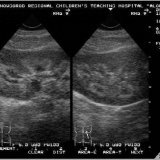Diabetic polyneuropathy and its stages
 Diabetic polyneuropathy( DP) is a severe and most frequent complication of diabetes mellitus( DM), poorly diagnosed and having severe pain symptoms, clinical disorders, early disability of patients, and a significant deterioration in the quality of life of patients in general. Manifestations of DP are associated with the duration of the disease and the age of the patients. This complication is heterogeneous in nature, therefore it affects the distal and proximal motor and peripheral nerves, and besides, the autonomic nervous system. Neurological difficulties can be equally often encountered in any form of diabetes. The most severe manifestations of somatic DP cause the growth of ulcerative leg lesions, and autonomic DP - high mortality of patients. Diabetic polyneuropathy is of interest because of its spread, as well as the abundance of forms and the severity of clinical manifestations.
Diabetic polyneuropathy( DP) is a severe and most frequent complication of diabetes mellitus( DM), poorly diagnosed and having severe pain symptoms, clinical disorders, early disability of patients, and a significant deterioration in the quality of life of patients in general. Manifestations of DP are associated with the duration of the disease and the age of the patients. This complication is heterogeneous in nature, therefore it affects the distal and proximal motor and peripheral nerves, and besides, the autonomic nervous system. Neurological difficulties can be equally often encountered in any form of diabetes. The most severe manifestations of somatic DP cause the growth of ulcerative leg lesions, and autonomic DP - high mortality of patients. Diabetic polyneuropathy is of interest because of its spread, as well as the abundance of forms and the severity of clinical manifestations.
The frequency of DP growth in patients with type 1 diabetes is 13-54%, in patients with type 2 diabetes it is 2-17-45%.The frequency of the DP may vary 5-100%.Such serious discrepancies are associated with the complexity of diagnosis and are associated with research methods.
According to the current theory of pathogenesis, DP is a pathology that develops against the background of vascular and metabolic deterioration inherent in diabetes. Relative or absolute insulin deficiency affects the onset of DP.DP is a consequence of the deterioration of the structural and functional state and imbalance of metabolism in the peripheral nerves.
Until recently, the metabolic theory of DP pathogenesis was based on the idea of glucosotoxicity, which explained the damage of nerves due to the influence of high glucose content. In this case, isolated hyperglycemia is not the basis for the formation of complications, since intensive management of glucose levels significantly reduces the damage to blood vessels and nerves, but can not completely deprive them of patients.
Today, a complex of metabolic impairments due to hyperglycemia and insulin deficiency is considered the cause of the formation of complications. The greatest attention is due to glycation of proteins by metabolism, sorbitol accumulation, oxidative stress, a decrease in the activity of protein kinase C, etc. Based on the results of countless studies, it was established that these metabolic disorders directly relate to structural and functional disorders of the nerves. Now we have proved that with diabetic peripheral neuropathy and a decrease in endoneural blood flow, hypoxia of nerves is increasing. It is an important cause of nerve dysfunction in diabetes. Nervous, non-fibrillated fibers are involved in the regulation of blood flow by controlling the formation of arteriovenous anastomoses. The deterioration of these fibers refers to the early development of DP.In the absence of mechanisms for controlling the formation of arteriovenous anastomoses, endonevral hypoxia is enhanced. Stimulation of the formation of shunts is an important sign of DP, manifested by the expansion of venous vessels of the foot and the growth of partial oxygen pressure.
An important place in the growth of complications is associated with oxidative stress. One of the consequences is a decrease in the content of nitric oxide with vasodilator and antiproliferative effects. This causes a deterioration in the supply of blood to the nerves and the growth of dysfunction. The intensity of stress grows due to the inhibition of the antioxidant system, which is determined by a decrease in the number of recovered glutathione, ascorbic acid, vitamin E and a decrease in the activity of antioxidant enzymes.
Stress is accompanied by a decrease in the content and deterioration in the work of natural antioxidants and damage to the function of the nerves with the subsequent growth of diabetic sensory polyneuropathy. It is believed that nutrition, for example, lack of vitamins, plays a role in the development of pathology. With DP, carbohydrate absorption worsens, signs of hypoglycemia hide, bioavailability of sugar-reducing oral preparations changes. Thus, summarizing information on the pathogenesis of DP, we conclude that deterioration of nerve fibers, especially in the early stages of the pathogenesis of DP, is reversible, and can be eliminated by improving the supply of blood in neural vessels.
How does diabetic polyneuropathy and its stages look like:
1. Subclinical DP .Symptoms and symptoms are absent. Subclinical DP at stage 1 can be diagnosed in special neurophysiological units. Such diagnostic tests are undesirable to use in everyday practice. Clinical differential diagnosis between 0 and 1 stages of DP is impossible.
2. Clinical DP :
- Painful chronic form: a) symptoms worse at night, which include burning, piercing pain;B) tingling;C) deterioration or lack of sensitivity and weakening or lack of reflexes.
- Painful acute form: a) poor management of diabetes, loss of body weight;B) diffuse pain sensations;C) hyperesthesia can be observed;D) it can be associated with the onset of sugar reduction treatment;E) the smallest sensitivity disorders or good sensitivity during the neurological peripheral examination.
- Amiotrophy: a) often occurs in elderly people with undiagnosed and poorly controlled DM of the second type;B) is characterized by muscle weakness;Destroys, most often, the proximal muscle tissue of the legs;Subacute origin;C) often accompanied by pain, mainly at night, with the lowest sensitivity disorders.
- Pain-free form of DP, combined with partial or total loss of sensitivity: a) no symptoms or numbness of the feet, pain and temperature sensitivity in the absence of reflexes.
3. Late complications of DP of clinical stage :
- Ulcers on the feet;
- Neuroarthenoarthropathy;
- Amputations of non-traumatic type.
Speaking of DP, these are the main signs that accompany polyneuropathy and the stages of its development. Risk groups for the development of DP are:
- Patients with type 1 diabetes one year after the onset of the disease.
- Patients with diabetes of the second type from the start of diagnosis of the disease.



